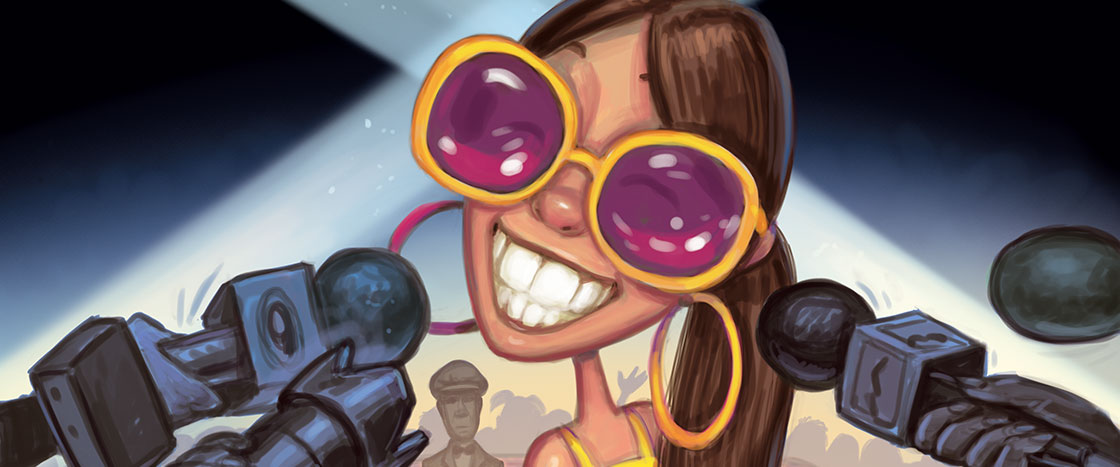Everywhere I went, people asked for my autograph. Total strangers would do my dance when they saw me. Everyone wanted my photo. I started wearing sunglasses to hide from my fans.
“Hey, Emma,” a boy said at lunch. He held out a piece of paper. “Can you sign this for my cousin?”
I took off my sunglasses and asked, “Do I know you?”
“It’s me, Julian,” he answered. “We have P.E. together.”
I let out a sigh and then scrawled a giant “E” on the paper.
“Thanks, Emma!” he said. “You’re amazing.”
“Whatever,” I said.
“You’ve changed,” Aubree commented as she bit into her cheese pizza.
I looked at my fingernails. Maybe I’d try deep-purple polish next.
“How so?” I threw my head back and smiled as someone took my picture.
“Well, you’re sort of . . . and don’t take this the wrong way, but you’re kind of . . . stuck up,” Aubree said softly.
I put my sunglasses back on. Aubree just didn’t get me.
“You’re jealous,” I told her. “Maybe I need a new best friend—someone who can deal with all of this.”
“Maybe you’re right,” Aubree said, her voice cracking. I thought she might be crying, but it was hard to tell since my sunglasses made the room so dark.
Theo walked past us and muttered, “I’ve created a monster.”
I stopped eating lunch with Aubree and started sitting with Serena Malik and the popular group. A couple of weeks earlier, they had made fun of me. Now they wanted to hear about Jackson Jax, and the limo, and Gary Larry.
After a while, though, I learned that you can tell the same stories only so many times before people get bored. My YouTube hits began to dwindle to only a few thousand a day, then a few hundred, then a couple, until it seemed like no one was watching my video anymore. The new top trending video was called “Betty & Herman.” It was of a dog and a duck who’d become best friends.
“Your 15 minutes of fame are up,” Theo said one night.
I was sitting alone in my room, watching “Girl Can’t Dance” on YouTube. I looked like an idiot. A happy, clueless idiot.
“Huh?”
“Andy Warhol said that—that everyone will be famous for 15 minutes,” Theo explained as he stood between me and the computer.
“Who’s Andy Warhol?” I asked. “Does he do karaoke?”
“He’s an artist,” my brother told me. “You’re hopeless.”


